An In Vitro Biological Model for Evaluation of the Anti-Dandruff Performance of Hair Care Products
Chen Mo, Jiang Dan, Huang Liang, Zhang Liping
Guangzhou Liby Enterprise Group co., Ltd., china
Dandruff is an common issue that affects many people. It not only leads to one’s appearance drawback but also reflects the sub-health status of the scalp. A serious dandruff problem will even cause some symptoms such as scalp itch and inflammation. Many hair care products are claimed to have the anti-dandruff efficacy,but the industry has not yet reach a consensus on the method to evaluate the anti-dandruff agent and the antidandruff efficacy of the hair care products. At present, the human-subject based approach and the in vitro approach are the mainstream methods for evaluating the antidandruff efficacy. The human subject-based approach is composed of methods such as clinical trial, patients’self-evaluation, and the detection of M.furfur, etc.[1,2]Although the human subject-based method produces direct and accurate results, it takes a long period and high price, which is not suitable for the preliminary screening phrase when developing formulations. The in vitro approach includes methods such as Agar dilution, CLSI - M27A method, Liquid-based dilution method, Ager diffusion method, and Urea liquid-based trace dilution method.[3~5]These methods have strong pertinence to evaluate the particular anti-dandruff agent. However, it can be hardly applied to evaluate the efficacy of hair care products.
A large number of literatures[1,2,6]have been reported that the hyperplasia of M.furfur is the main cause of the dandruff. The decline and extinction of M.furfur on the scalp directly leads to the reduction of dandruff. Therefore many efficacy evaluations make antibacterial efficacy of M.furfur an index.[7]
Based on the above findings and issues, the purpose of this paper is to establish an in vitro model to evaluate the anti-dandruff performance of hair care products. The model functions in such steps as washing the pigskin which is used as the substrate with anti-dandruff agent or shampoo, then applying M.furfur to the surface of the culture medium to measure the antibacterial efficacy by plate contact method so as to evaluate the performance of the anti-dandruff agent and shampoo.
Experiment
Reagents and instruments
The materials used in this work were as follow:M.furfur(ATCC 14521, American type culture collection); Leeming-Notman Medium Base(actidione solution, Zhao Yuan Top Biotech Co., Ltd. Olive oil,Aladdin Industrial Corporation); Pig skin purchased from the supermarket.
The three kinds of anti-dandruff agent were zinc pyrithione (ZPT), bispyrithione (BPT) and piroctone olamine (OCT).The information of the anti-dandruff agents is shown in Table 1. The six homemade kinds of shampoo numbered 1 to 6.No.1 and No.2 are added with ZPT, and No.3 to No. 6 are added with OCT. The information is shown in Table 2.
The devices used in this experiment were as follow:BSC-1600IIB2 Biosafety Cabinet (Suzhou Antai air-tech Co., Ltd.); HCP108 Constant Temperature and Humidity Incubator (German Memmert); CL-32LDP hot steam sterilization pot (Japan ALP).
Experiment process
1) Pretreatment of the substrate
With the fat and hair removed, the pigskin was cut into small pieces in the size of 4 cm×4 cm and then sterilized with Co60-γ-ray.
2) Inoculation of indicator bacteria
44.0 g Leeming-Notmanmedium base was boiled in 1 L deionized water until completely dissolved.1.6 mL olive oil is added to per 80 mL medium. It was cooled to about 50℃ after high pressure sterilization.40 mg actidione solution was added to per 80 mL medium to prepare the LN plate (90 mm × 15 mm).100 μL M.furfurat a concentration of 1×105~3×105CFU/mL was inoculated in the contact plate.
3) Measurement of the bacteriostatic efficacy
The method for testing anti-dandruff agent: 0.5 mL of anti-dandruff agent was applied to the surface of each pigskin piece kept lathering the pigskin surface for 1 minute.The pigskin surface was dried in air in a sterile petri dish until the pigskin surface is free of water drops. Each agar contact plate was pressed firmly against the treated pigskin surface for 15 minutes. The pigskin was removed and the contact plates were incubated for about 3 ~ 4 days at (32±2)℃. Two parallel experiments were performed for each sample. And the results of the two independent experiments were compared.
The method for testing shampoo: 0.5 mL of sample was applied to the pigskin surface and lathered the entire surface for 1 minute. The pigskin surface was gently rinsed twice in 100 mL of sterile water for 1 minute. The pigskin surface was dried in air in a sterile petri dish until the pigskin surface is free of water drops. Each agar contact plate was pressed firmly against the treated pigskin surface for 15 minutes. The pigskin was removed and the contact plates were incubated for about 3 ~ 4 days at (32±2)℃. Two parallel experiments are performed for each sample. And the results of the two independent experiments are compared.

Table 1. Information of anti-dandruff agent

Table 2. Information of hair shampoos
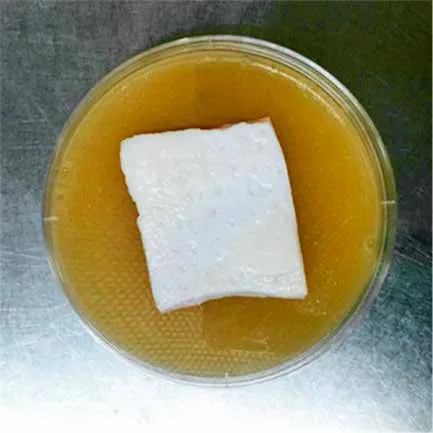
Figure 1. Plate contact method
The anti-dandruff performance test were characterized by the effective index P. The equation for the effective index P, can be expressed as: P = S1/ S0.
In the formula, S1is the sterile area of the plate. S0is the area of the plate (90 mm×15 mm). In this paper, S1 is calculated by Image J software; S0is 63.585 cm2. The pigskin area is 16 cm2.
4) The method of anti-dandruff performance evaluation
There is no current standard for reference, so we set up the following standard for evaluation: The index P is 0.25 when the sterile area and the area of pigskin are equal. In the process the antibacterial efficacy may not be sufficient,for the liquid of the pigskin border easy overflow to cause diffusion. It takes the P value of 80% (0.20) as a threshold for determining the significant degree of the antidandruff performance (Pa). The sample with a P ≥0.2 has a strong anti-dandruff performance; It takes the P of 50% as the threshold for determining the effectiveness of the anti-dandruff performance. The sample with a P ≤0.1 has no anti-dandruff performance. The sample with a P value range 0.1<P <0.2 has a medium antidandruff performance. This index is indicative of antidandruff efficacy. Generally, the higher the index value,the better its anti-dandruff agent to inhibit the growth of microorganisms. The scoring criteria for anti-dandruff performance are shown in Table 3.
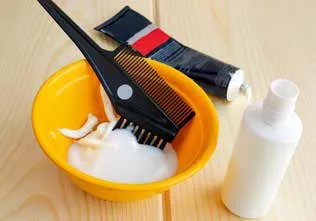

Table 3. Scoring criteria of the anti-dandruff performance
5) Data repeatability analysis of thein vitromodel
It is called intra-group reproducibility analysis that two parallel test results (P1and P2) of the same sample in the single experiment were analyzed by deviation.It is called between-groups repeatability analysis that two results of two independent parallel test of the same samples in analyzing deviation (PⅠ, PⅡ). According to the relative deviation of biological test is about 15%,[10]it can be thought that the in vitro model can provide reliable test data when the relative deviation of intra-group repeatability and between-groups repeatability are less than 15% and bacteriostatic grade at the same level. The formula is as follows:
The average of intra-group C= (P1+P2)/2
The average of between-group C’= (PI+PII)/2
The mean difference of intra-group

The mean difference of between-groups

The relative deviation of intra-group D=F/C×100%
The relative deviation of between-groups

Results and discussion
Evaluation of anti-dandruff agent
The antibacterial efficacy of three kinds of antidandruff agent for M.furfur was shown in Table 4. The order for antibacterial efficacy of the anti-dandruff agents with mass fraction range of 0.1%~2.0% is BPT>ZPT>OCT. This result is consistent with the trend of antibacterial efficacy in the literature[8,9]which shows that the method has discrimination between different anti-dandruff agents and the different concentrations of the same agent.
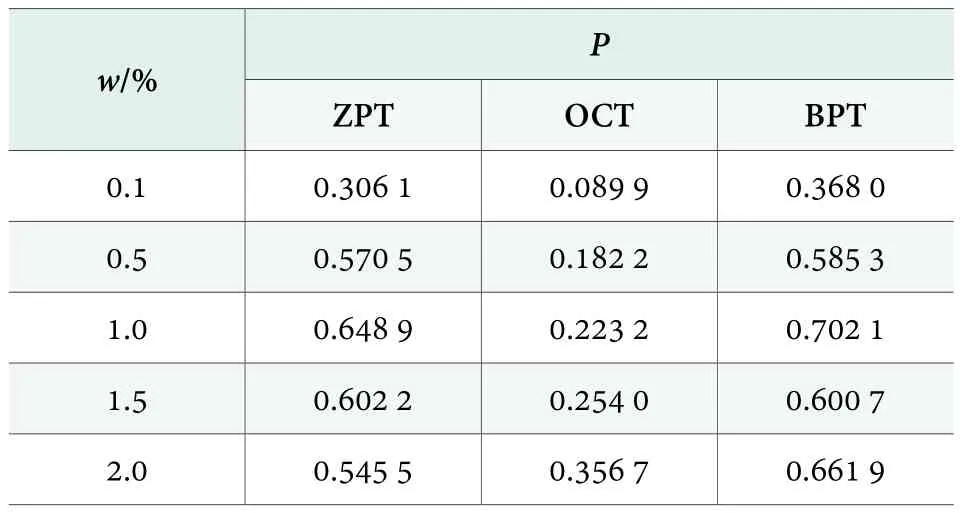
Table 4. Bacteriostatic action of anti-dandruff agents
The sedimentary of different anti-dandruff agent on the pigskin may have relationship with its solubility. The order of solubility is OCT > BPT > ZPT and the order for antibacterial efficacy is BPT>ZPT>OCT. It can be explained that the solubility of anti-dandruff agent is not the primary factor to determine the result.
Evaluation of shampoo
The utilization of in vitro biological model to evaluate the anti-dandruff performance of hair care products will bare the experiment error due to the following reasons:Photograph condition: such as photo light, light and shade degree; The image processing software: the size of pixel values of image processing software also results in data fluctuation; Pigskin area: the pigskin cannot be cut exactly into the same size by hand because of thickness and slippage of pigskin. Concentration of M.furfur suspension: in the experiment, we can only control the M.furfur suspension in a certain order of magnitude but we cannot ensure that the concentration of Malassezia suspension in every experiment is exactly the same. In order to investigate the effect of these deviations on the experiment results, it is necessary to investigate the data repeatability and reliability of the results.

1) The analysis of the intra-group reproducibility
The results of the intra-group reproducibility are shown in Table 5. According to Table 5, the relative deviations of the 6 parallel experiments are all below 8%.Although the data are fluctuant slightly, the relative deviations are all within the allowed experimental error range and the bacteriostatic grade of the same product is identical. It is shown that the errors caused by the difference of photo conditions, image processing software and pigskin area didn’t affect the results. The result of this method is reliable.
2) The analysis of the between-groups reproducibility
The test results are shown in Table 6. As can be seen from Table 6, the relative deviation of the data of 6 samples based on 2 repeated experiments is less than 9%and the bacteriostatic grade is identical. It can be proved that the model has good repeatability and reliability.

Table 5. Test results for repeatability in one single group

Table 6. Test results for repeatability between two test groups
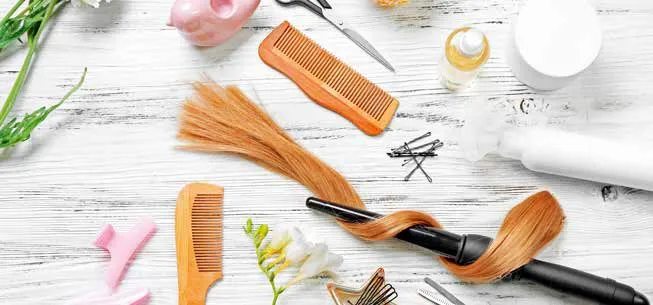
Evaluation of anti-dandruff performance
According to the results of the above Table 5 and 6,the bacteriostatic grade of 4# shampoo is grade1, and the shampoo has no anti-dandruff efficacy. The bacteriostatic grades of 3 #, 5# and 6# shampoo are grade 2 with medium anti-dandruff efficacy. The bacteriostatic grades of 1# and 2# shampoo are grade 3 which indicates a strong anti-dandruff effect.
The above results show that this method of the in vitro model can distinguish the anti-dandruff performance of shampoo. It can provide some reference for the evaluation result of human subject. Due to the difference of substrate and the error of the test process, there may be deviation between the model and other external models or the human subject. The follow-up work will further study and optimize the in vitro model to realize the accurate correspondence between the method and the human subject.
Conclusion
An in vitro model for evaluation of the anti-dandruff performance of hair care products is established. In this model, Malassezia furfur is used as indicator bacteria with pigskin as substrate. The model has good repeatability.The parallel experimental deviations in one single group are less than 8%, and the parallel experimental deviations between two test groups are less than 9%. This method has discrimination between different anti-dandruff agents and the different concentrations of the same agent. The order of antibacterial efficacy for the anti-dandruff agents within mass fraction range of 0.1%~2.0% is BPT>ZPT>OCT.And the method also has discrimination for the antidandruff efficacy of the 6 kinds of shampoo.
[1] Yu Qin; Yan Min.Discussion on the evaluation of carding efficiency of hair product. China Surfactant Detergent &Cosmetics 2012, 6, 57-59.
[2] Ye Zhangzhang;Wang Ran; Xie Xiao-yuan; et al. Evaluation method on efficacy of Antidandruff cosmetics.Southern China Journal of Dermato-Venereology 2009, 16(5), 336-339.
[3] Huang Xin; Shen Liang-liang; Xu hong; et al.Inhibition of eight Chinese herbal components on M.globosa in vitro.Chin J Mycology 2011, 6(2), 98-100.
[4] Zheng Xiao-hui; Gao Jin; Zheng Yi; et al. Experimental study about the inhibition effects of nine kinds of traditional medicine on the isolated Malasseziastrain.Chinese Journal of Dermatovenereology of Integrated Traditional and Western Medicine 2003, 2(1), 16-18.
[5] Zheng Xiaohui, Xia Xiujiao; Wang Zhidong; et al. Susceptibility testing of Malassezia to seven antifungal agent in vitro.Chin J Mycology 2006,20(2), 75-79.
[6] Yang Yongzhong.The Design principle of the effective chipremoving shampoo technology. China Cosmetics Review 2008(7), 82-87.
[7] Lu Yonghong.Malassezia and dandruff. Southern China Journal of Dermato-Venereology 2001, 8(4), 267-269.
[8] Guo Huiyi; Zhou Xinxin; Jiang Dan. Inhibitive effect of 4 kinds of Chinese herbal and their compound on Malassezia in vitro.Chin J Mycol 2013, 8(4), 210-213.
[9] Song Jie; Wen zhong; Hong Sheng-jie; et al.Research on antidandruff agents and their safety.Detergent & Cosmetics 2012, (07),20-23.
[10] Han Peng; Liu Zhiwen; Zhang Guogang; et al. Evaluation of combination therapy with vitamin E and vitamin C for idiopathic asthenospermia by Q value. The Journal of Practical Medicine 2014, 5, 738-741.
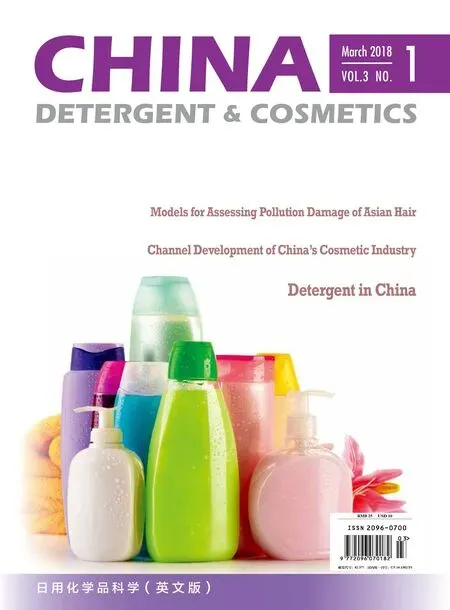 China Detergent & Cosmetics2018年1期
China Detergent & Cosmetics2018年1期
- China Detergent & Cosmetics的其它文章
- Reconstruction of 3D Skin Model and Its Application in Evaluation the Efficacy of Cosmetic Raw Materials and Active Intredients
- Models for Assessing Pollution Damage of Asian Hair
- Technical Approaches and in-vitro Evaluation Methods for Scalp Care
- Regulation of Talcum Powder in Cosmetics at Home and Abroad
- Technical Standard System Construction Plan for Surfactants and Detergents in the“13th Five-year Plan” Period
- A Summary on Chinese Daily Chemical Journals
